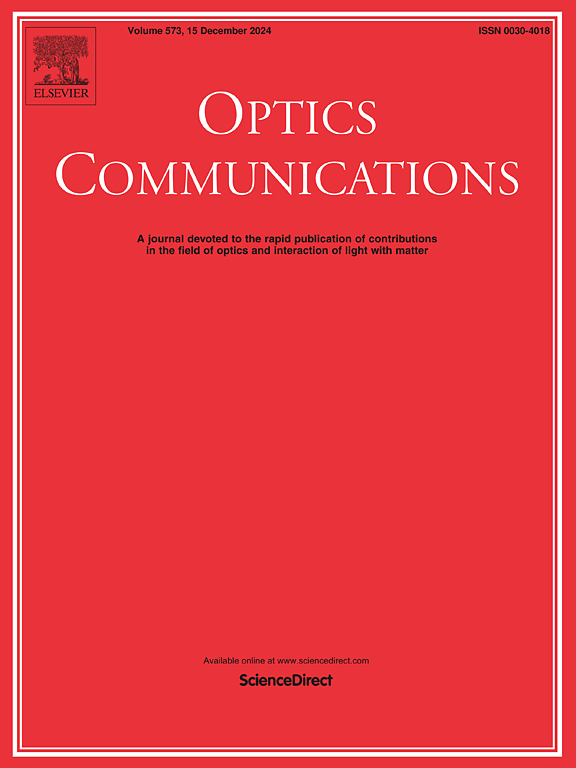Understanding the mechanism of pulse cumulative effect on supercontinuum generation from femtosecond laser filament in air
IF 2.5
3区 物理与天体物理
Q2 OPTICS
引用次数: 0
Abstract
We investigate the influence of pulse cumulative effect on supercontinuum generation from femtosecond laser filaments in air. Based on experimental and numerical insights, a clear physical picture of the pulse cumulative effect on the supercontinuum generation is constructed. The experimental results show that higher repetition rates correlated with supercontinuum extension into shorter wavelengths, attributed to the pulse cumulative effect, which is a consequence of gas dynamics influenced by heating, resulting in a reduced density of gas molecules. The effects on Kerr and plasma-induced self-phase modulation are analyzed in terms of the supercontinuum generation mechanism, and it is concluded that enhanced Kerr-induced self-phase modulation leads to supercontinuum broadening towards shorter wavelengths. This study holds promise not only for better understanding the supercontinuum generation mechanism in the filaments but also for providing guidance on the supercontinuum generation in different repetition rate and their applications.
了解脉冲累积效应对空气中飞秒激光灯丝产生超连续光的影响机制
我们研究了脉冲累积效应对飞秒激光灯丝在空气中产生超连续光的影响。基于实验和数值分析,我们构建了脉冲累积效应对超连续产生的清晰物理图景。实验结果表明,较高的重复率与超连续延伸到较短波长有关,这归因于脉冲累积效应,而脉冲累积效应是受加热影响的气体动力学的结果,导致气体分子密度降低。从超连续产生机制的角度分析了对克尔和等离子体诱导的自相调制的影响,得出的结论是,克尔诱导的自相调制增强会导致超连续向更短波长扩展。这项研究不仅有望更好地理解灯丝中的超连续产生机制,还能为不同重复率下的超连续产生及其应用提供指导。
本文章由计算机程序翻译,如有差异,请以英文原文为准。
求助全文
约1分钟内获得全文
求助全文
来源期刊

Optics Communications
物理-光学
CiteScore
5.10
自引率
8.30%
发文量
681
审稿时长
38 days
期刊介绍:
Optics Communications invites original and timely contributions containing new results in various fields of optics and photonics. The journal considers theoretical and experimental research in areas ranging from the fundamental properties of light to technological applications. Topics covered include classical and quantum optics, optical physics and light-matter interactions, lasers, imaging, guided-wave optics and optical information processing. Manuscripts should offer clear evidence of novelty and significance. Papers concentrating on mathematical and computational issues, with limited connection to optics, are not suitable for publication in the Journal. Similarly, small technical advances, or papers concerned only with engineering applications or issues of materials science fall outside the journal scope.
 求助内容:
求助内容: 应助结果提醒方式:
应助结果提醒方式:


